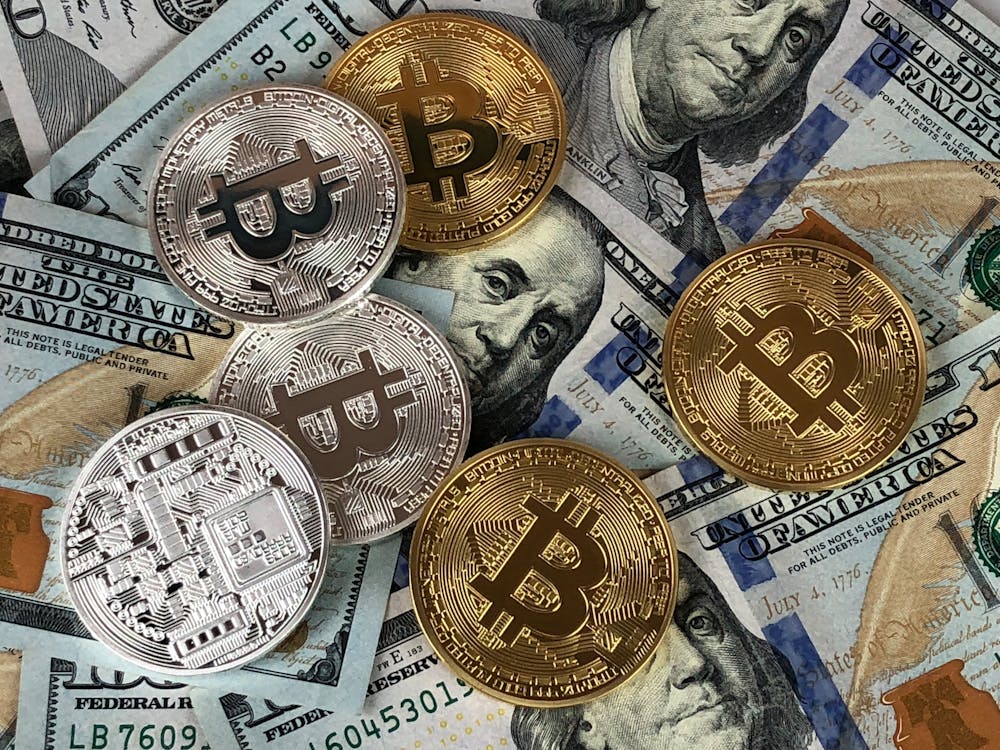While a relatively new concept in the crypto world, stablecoins have already made a significant impact by bridging the gap between traditional finance and cryptocurrencies. With a pegged value to fiat currencies or other assets, stablecoins provide a reliable means of transferring value, hedging against volatility, and accessing the benefits of blockchain technology.
With ongoing regulatory developments, technological advancements, and market adoption, stablecoins are poised to become an integral part of the global financial system, offering stability, liquidity, and accessibility to users worldwide.
As the digital currency ecosystem matures, leading digital asset consulting experts at Kenson Investments share some insights into stablecoins so individuals and businesses can benefit from a more interconnected, efficient, and inclusive financial future.
What You Should Know About Stablecoins
Stablecoins are a type of cryptocurrency designed to maintain a stable value relative to a specific asset or basket of assets, such as fiat currencies like USD, EUR, or JPY, commodities like gold, or even other cryptocurrencies. Unlike volatile cryptocurrencies like Bitcoin or Ethereum, stablecoins aim to minimize price fluctuations, providing users with a reliable medium of exchange, store of value, and unit of account.
Explore More: Stablecoins for Investment: The Path to Consistency in the Crypto World
Origins and Evolution
The concept of stablecoins dates back to the early days of cryptocurrencies when users recognized the need for a stable and reliable digital currency for everyday transactions and financial applications. The first stablecoin, Tether (USDT), was introduced in 2014, pegged to the value of the US dollar on a 1:1 basis. Tether quickly gained popularity among cryptocurrency traders and investors as a convenient way to hedge against market volatility and facilitate trading on exchanges with limited fiat support.
Since the launch of Tether, the stablecoin ecosystem has witnessed significant growth and innovation, with various projects introducing new stablecoin models and mechanisms to achieve price stability. Today, stablecoins come in different forms, including centralized stablecoins issued by trusted entities like banks and financial institutions, decentralized stablecoins governed by smart contracts on blockchain platforms, and algorithmic stablecoins that use complex algorithms to maintain stability without relying on external collateral.
Types of Stablecoins
- Fiat-Collateralized Stablecoins are backed by reserves of fiat currency held in bank accounts or custodial reserves. Each unit of the stablecoin is fully backed by a corresponding unit of the fiat currency, providing stability and confidence in the value of the stablecoin. Examples include Tether (USDT), USD Coin (USDC), and TrueUSD (TUSD).
- Crypto-Collateralized Stablecoins are collateralized by other cryptocurrencies held in reserve. Users lock up a certain amount of cryptocurrency as collateral to mint or issue stablecoins. The value of the collateral ensures stability and acts as a buffer against price fluctuations. Examples include Dai (DAI) and sUSD.
- Algorithmic Stablecoins rely on algorithmic mechanisms, such as automated supply adjustments or algorithmic trading, to maintain stability. Algorithmic stablecoins use supply and demand dynamics and mechanisms such as algorithmic rebasing, seigniorage shares, or algorithmic trading to regulate the circulating supply of the stablecoin and stabilize its price. Examples include Terra (LUNA) and Ampleforth (AMPL).
Key Use Cases Of Stablecoins
Payments and Remittances
Traditional remittance services are often slow, expensive, and subject to currency exchange fluctuations. Stablecoins offer a faster and more cost-effective alternative, enabling near-instantaneous transactions with minimal fees. Individuals and businesses can use stablecoins to send and receive payments globally, bypassing the need for intermediaries and traditional banking systems.
Trading and Investment
Stablecoins serve as a stable store of value and a liquidity tool for traders and investors in the cryptocurrency markets. During periods of high volatility or market uncertainty, traders can convert their volatile cryptocurrencies into stablecoins to preserve capital and mitigate risk.
Stablecoins also facilitate seamless trading between different cryptocurrencies on exchanges, allowing users to quickly enter and exit positions without exposure to price fluctuations.
Decentralized Finance (DeFi)
Stablecoins play a central role in the rapidly growing DeFi ecosystem, powering various decentralized financial applications and protocols.
Users can deposit stablecoins into lending protocols to earn interest, borrow stablecoins against collateralized assets, provide liquidity to decentralized exchanges (DEXs), or participate in yield farming and liquidity mining programs.
Stablecoins enable users to access a wide range of financial services without relying on traditional banks or financial intermediaries.
Tokenization of Assets
Stablecoins enable the tokenization of real-world assets, such as commodities, real estate, or securities, by representing them on a blockchain in a stable form.
Asset-backed stablecoins provide a transparent and efficient way to digitize and fractionalize assets, increasing liquidity, reducing transaction costs, and enabling broader access to investment opportunities.
Investors can purchase tokenized assets using stablecoins, gaining exposure to traditional asset classes while benefiting from the advantages of blockchain technology.
Cross-Border Trade and e-Commerce
Stablecoins facilitate international trade and e-commerce by offering a reliable and efficient medium of exchange for businesses operating across borders. Exporters and importers can use stablecoins to settle transactions quickly and securely, eliminating the need for costly currency conversions and reducing exposure to exchange rate risk. Stablecoins streamline the process of conducting cross-border trade, enabling businesses to access global markets and expand their operations with greater ease.
Financial Inclusion
Stablecoins have the potential to improve financial inclusion by providing access to stable and low-cost financial services to unbanked or underbanked populations. With the proliferation of mobile phones and internet access, stablecoins can serve as a gateway to the global financial system for millions of people worldwide.
By leveraging blockchain technology and decentralized networks, stablecoins empower individuals to participate in the digital economy, access savings, credit, and investment opportunities, and build wealth over time.
Impact on Crypto Ecosystem and Traditional Finance
Increased Liquidity and Stability: Stablecoins provide liquidity to cryptocurrency markets, facilitating trading and investment activities while reducing reliance on volatile cryptocurrencies. They also offer stability and predictability, making them an attractive option for risk-averse users and institutions.
Financial Inclusion: Stablecoins have the potential to improve financial inclusion by providing access to stable and low-cost financial services to unbanked or underbanked populations. With the proliferation of mobile phones and internet access, stablecoins can serve as a gateway to the global financial system for millions of people worldwide.
Regulatory Scrutiny: The growing popularity of stablecoins has attracted regulatory attention, particularly from central banks and financial authorities concerned about potential risks to financial stability, money laundering, and consumer protection. Regulators are exploring ways to regulate stablecoin issuers and ensure compliance with existing financial regulations.
Integration with Traditional Finance: Stablecoins are increasingly being integrated into traditional financial systems, with banks, payment processors, and fintech companies exploring ways to leverage stablecoins for cross-border payments, settlement, and other financial services. This integration could streamline processes, reduce costs, and improve efficiency in traditional finance.

Primary Reasons Driving The Demand For Stablecoins
Price Stability: While traditional cryptocurrencies like Bitcoin and Ethereum are known for their price volatility, stablecoins offer a reliable and predictable value, making them ideal for everyday transactions, hedging against market fluctuations, and preserving wealth.
Facilitating Transactions: Traditional fiat currencies are subject to limitations in terms of cross-border transactions, settlement times, and transaction costs. Stablecoins addresses these challenges by offering a borderless, fast, and cost-effective means of transferring value globally. Users can send and receive stablecoins instantly, bypassing the delays and fees associated with traditional banking systems.
Access to Decentralized Finance (DeFi): Stablecoins play a crucial role in the rapidly growing DeFi ecosystem, enabling users to access a wide range of decentralized financial services and protocols. By providing a stable medium of exchange and store of value, stablecoins facilitate lending, borrowing, liquidity provision, yield farming, and other DeFi activities without the need for traditional financial intermediaries.
Reducing Counterparty Risk: In traditional financial systems, users often face counterparty risk when transacting with centralized entities like banks or payment processors. Stablecoins mitigate this risk by operating on decentralized blockchain networks, where transactions are recorded transparently and securely without relying on intermediaries. Users maintain full control over their funds and can transact peer-to-peer without the risk of third-party defaults.
Financial Inclusion: Stablecoins have the potential to improve financial inclusion by providing access to stable and low-cost financial services to unbanked or underbanked populations. In regions with limited access to traditional banking infrastructure, stablecoins offer a viable alternative for storing value, making payments, and accessing savings, credit, and investment opportunities.
Experience The Stability And Security Of Stablecoins With Kenson Investments By Your Side
Stablecoins have become a vital component of the digital asset landscape, offering stability, reliability, and versatility in a volatile market. Whether you’re a trader looking to hedge against price fluctuations, a DeFi enthusiast exploring yield farming opportunities, or a business seeking efficient cross-border payment solutions, stablecoins provide a stable foundation for your financial needs.
Leverage the benefits of stablecoins with Kenson Investments. Digital asset consultants at the firm offer comprehensive investment analysis and portfolio management solutions with a focus on security and transparency. They provide expert guidance, diversified portfolios, and access to innovative investment solutions in the rapidly expanding digital asset sector.
About the Author
Andrew Anderson is a seasoned financial analyst and digital asset management expert at a digital investments firm. With over a decade of experience in the finance industry, Andrew specializes in navigating the complex world of digital assets, with a particular focus on stablecoins.
His passion lies in helping individuals and businesses optimize their investment strategies and achieve their financial goals in the rapidly evolving digital asset landscape. Andrew’s expertise in stablecoins, combined with her commitment to security, transparency, and personalized service, makes her a trusted advisor for clients seeking innovative solutions in the digital asset space.






